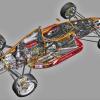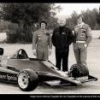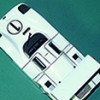Interesting thread which I finally found some time to read myself into. Like with laws in general I don´t think it is possible to write down rules, that cover every thinkable situation. So in the end there must be some interpretation by the judge, who finally comes to a decision. This is not necessarily the "truth", as we all know that verdicts may be revisioned by a higher court.
In particular I think in the FIA ruling system there is always some explicit room for such decisions. For example I remember an instance in the eighties, where in my view the final decision was in my opinion not according to any rules. In 1983 Rosberg lost his second place because of being push-started, but the interesting thing is, that - other than usual - the second place was declared "vacant", where normally one would have expected, that all the other finishers would have to be promoted one position. But nevertheless the decision stood and would have almost decided the championship, as Prost, who would have been one of the benefiters, lost it by two points in the end. Ok, this is a little bit OT, but I can imagine, that there will be some similar space for the judges to decide, when to count somebody as finisher an when not.
Some further remarks to what has already been written:
Originally posted by Bonde
I suppose, depending on category and rules, that there has to be enough of the car left to preclude it being disqualified for being underweight or otherwise contravening regulations. For instance, IIRC OTTOMH, 'Wattie' was disqualified from a points-scoring finish in the 1976 French GP because his rear wing support was bent during the race, rendering the wing dimensions illegal.
This is exactly what I wanted to make clear with my example above. I think much depends on the personal attitudes of the stuarts of the race or other persons "of influence" (just think about Benetton´s "illegal fuel" affair, I think happened around 1995).
Originally posted by Vitesse2
Each show was themed and on a sports one, probably in 1968 or 69, one of the targets was the left front wheel of Graham Hill's car, which detached itself and beat his opposition over the line. It was explained on the show that the left front wheel was the part of the car which was vital ....
I f I did understand you right, then to me it sounds physically impossible, that any "un-driven" part of a car (means not attached to the transmission) should have some kind of speeded up against the rest of the car which is still under power. Shouldn´t the drag have immediately slowed the wheel down from the moment it lost contact to the rest of the car?
Originally posted by Pablo Vignone
Maybe it sounds as a joke, but some very weird thing happened not so many months ago, during a race of the 2005 Argentinian Turismo Carretera series, held at Buenos Aires tracks. The cars are some 70’s sedan silhouettes, and according to the rules they have to carry the transponder somewhere in the rear right wheelarch.
Juan Manuel Silva and Rafael Verna were fighting very closely the race (and as it happened, the title fight also) and they passed the chequered flag too close between. The impression was that Silva had won by a whisper, although there is no white line across the track, but the official timing gave Verna an advantage of 16/1000th of a second over Silva.
The two transponders were, in effect, in the rear wheelarches. But Silva’s was at the back of the wheel, and Verna’s was at the front! That tiny difference, less than 20 cm, was enough to win although impression was that Silva has been the winner!
You can see what I mean at:
http://www.clarin.co...tes/d-02601.htm
As I understand from the Spanish text (and also concluding from the picture) at this moment the cars were certainly much faster than the 45 km/h, which is the upper limit, at which a difference of 20 cm would have been decisive. Just calculate:
20 cm * 1/0,016 s = 1.250 cm/s = 45 km/h
or in other words at about 150 km/h (about the calculation in the text) a difference of 0,016 s represents already a distance of 67 cm.
Beyond that I think it is the responsibility of the team to build their cars to the optimum allowed under the rules. If they don´t and the rules are transparent, they must not blame anybody else.
Originally posted by scousepenguin
Sorry to be pedantic, but does the wheel have to be on the ground when it crosses the finish line?
At Avus Dieter Quester once brought home a 3rd place, finishing his BMW DTM-car on the roof...






























